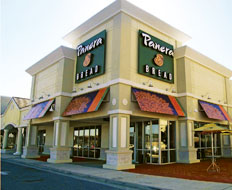According to a recent study by American Express Business Insights, ultra-affluent consumers increased quick-serve spending by 24 percent in the second quarter of 2010, as compared to the same quarter last year. Ultra-affluent customers are defined as those who charge more than $7,000 per month on their cards.
“That’s very clear evidence that these people who used to go into better restaurants are now going into fast food restaurants,” says Tahira K. Hira, Ph.D, a professor of personal finance and consumer economics at Iowa State University. “It just shows that well-to-do, above-average people are also being affected by the current economic environment.”
American Express Business Insights points out that ultra-affluent consumers increased spending on business-class plane tickets by 114 percent and also boosted their spending on cruises, car rentals, and luxury hotels. In addition, the group saw a 12 percent spike in fine dining. Because of those findings, executives at American Express don’t see the increase in quick-serve charges as such a dire sign for the economy—or for quick serves.
“While their spending levels and frequency have rebounded, even the ultra-affluent are value-minded,” says Ed Jay, senior vice president of American Express Business Insights, in an e-mail to QSR. “[They] are still trying to be frugal in the areas in which that is possible. Places like quick-service restaurants and discount retailers afford the ultra-affluent the ability to spend their money carefully.”
The average U.S. consumer also increased quick-serve purchases in the same period, but by only 8 percent.
“[That’s] still a significant rise,” Jay says. “We expect this trend to continue as the economy recovers.”
Darren Tristano, executive vice president of Technomic, says the numbers indicate an economy that could finally be rebounding.
“There’s a number of contributing factors, but overall it would suggest consumers are using fast food more and dining out more,” he says.
He’s also careful to point out another likely reason for the findings.
“When you talk about American Express, they’re getting their card accepted at a lot more fast food restaurants than they did a year ago,” Tristano says. “For many, many years, fast food restaurants weren’t taking credit cards. … They’re accepted in more locations now, which gives those card holders more opportunities to spend at those restaurants.”
Plus, consumer research shows that customers tend to spend more when they’re paying with a credit card than when they’re using cash.
The study’s findings provide insight into more than just a possible turnaround in the economy, though. Not only did the ultra-affluent spend more at quick serves than they have in the past, but as a group they charged more total at quick serves in Q2 than did the average U.S. consumer. Since this demographic has declared itself such loyal—and lucrative—quick-serve customers, individual brands have an opportunity to respond and make an effort to appeal to them even more.
“Most restaurants at the fast food level have raised the bar on the quality of their food,” Tristano says. He points to McDonald’s in-store renovations and new premium menu offerings, such as an Angus steak burger, as prime examples of a larger trend in quick service.
“As a result of higher quality, improved look and experience, and the added convenience—and certainly the low price point—there are a lot of contributing factors that are appealing to ultra-affluent consumers when it comes to these restaurants,” Tristano says.
The success of fast-casual chains like Panera Bread and Chipotle, despite the sluggish economy, is further proof of the trend.
“To appeal even more toward these consumers, look toward up-scaling the product and experience to provide a better venue than full service,” Tristano says.
But attracting ultra-affluent consumers doesn’t have to mean alienating average ones. Tristano recommends multitiered menus that offer products at varied prices and with varied positioning that will appeal to different sets of customers. Quick serves can take this a step further by promoting the appropriate product to the appropriate audience in their advertising efforts. For example, quick serves should distinguish between the audience watching Mad Men versus that watching American Idol, and adjust the commercial they would run accordingly.
“McDonald’s might be advertising its Angus burger when they’re dealing with the sophisticated shows, but the Big Mac when it’s the average consumer,” Tristano says. “The way they approach marketing by price point is a great example of how they’re differentiating.”










